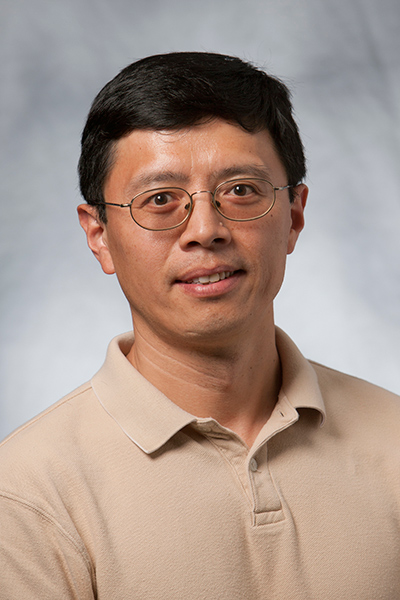Faculty: Song Qian

Professor
Ph.D., Duke University 1995
M.S., Nanjiing University
B.S., Tsinghua University
Research and Teaching Interests
- Environmental and ecological statistics
- Bayesian hierarchical models
- Water quality and watershed modeling
- Stream ecosystem response to disturbance
419.530.4230 | song.qian@utoledo.edu
ResearchView Dr. Qian's Publications
TeachingDownload Vitae (PDF)
Research
My research interest is in the development and application of quantitative methods for analyzing complex environmental and ecological data. An important feature of ecological study is that we use variables operating at different scales, some representing spatiotemporal scales and some representing conceptual scales. For example, regional annual means of temperature and precipitation represent local and instantaneous conditions; individual species compositions are observed and summarized to derive variables representing changes at a community or ecosystem level. In all cases, we observe data representing a fine spatiotemporal scale or at individual species level and we aggregate these observations to make inference at a larger spatiotemporal scale or at community level. Mathematically, the multiple levels in the data can be represented by the hierarchical structure of a Bayesian hierarchical/multilevel model. However, the full potential of the hierarchical modeling approach has yet to be explored. In the past five years, I have focused on using the Bayesian hierarchical modeling approach in several research areas:
-
- Harmful algal blooms in western Lake Erie;
- Stream ecosystem response to watershed urbanization;
- Effects of climate changes reflected in phenological changes in biological and nonbiological measures;
- Regional nutrient criteria and water quality management;
- Watershed modeling using Bayesian SPARROW; and
- Statistical issues in chemical measurement methods (with an emphasis on ELISA).
I advise graduate students on thesis and dissertation research in:
-
- Food web structure along a productivity gradient in Lake Erie (Bayesian networks modeling);
- Effects of conservation practices in controlling nutrient loss from agriculture fields (statistical causal inference);
- Effects of shoreline structure on nearshore fish community in Lake Erie (Bayesian generalized linear modeling;
- Detecting large fish target using hydro-acoustics (Bayesian hierarchical modeling);
- Long-term frog population dynamics in northwestern Ohio (multilevel modeling); and
- Assessing the potential of grass carp spawning in Lake Erie tributaries (Bayesian GLM and networks model).
View Dr. Qian's Google Scholar page.
Teaching
At the graduate level, I teach two required courses: (1) Advanced environmental data management and (2) Advanced biostatistics on an annual basis. I also teach Environmental models and introduction to Bayesian statistics every other year. In addition I offer a number of special topics courses.
At the undergraduate level, I have taught biodiversity (an introductory biology course) and introduction to environmental science.


